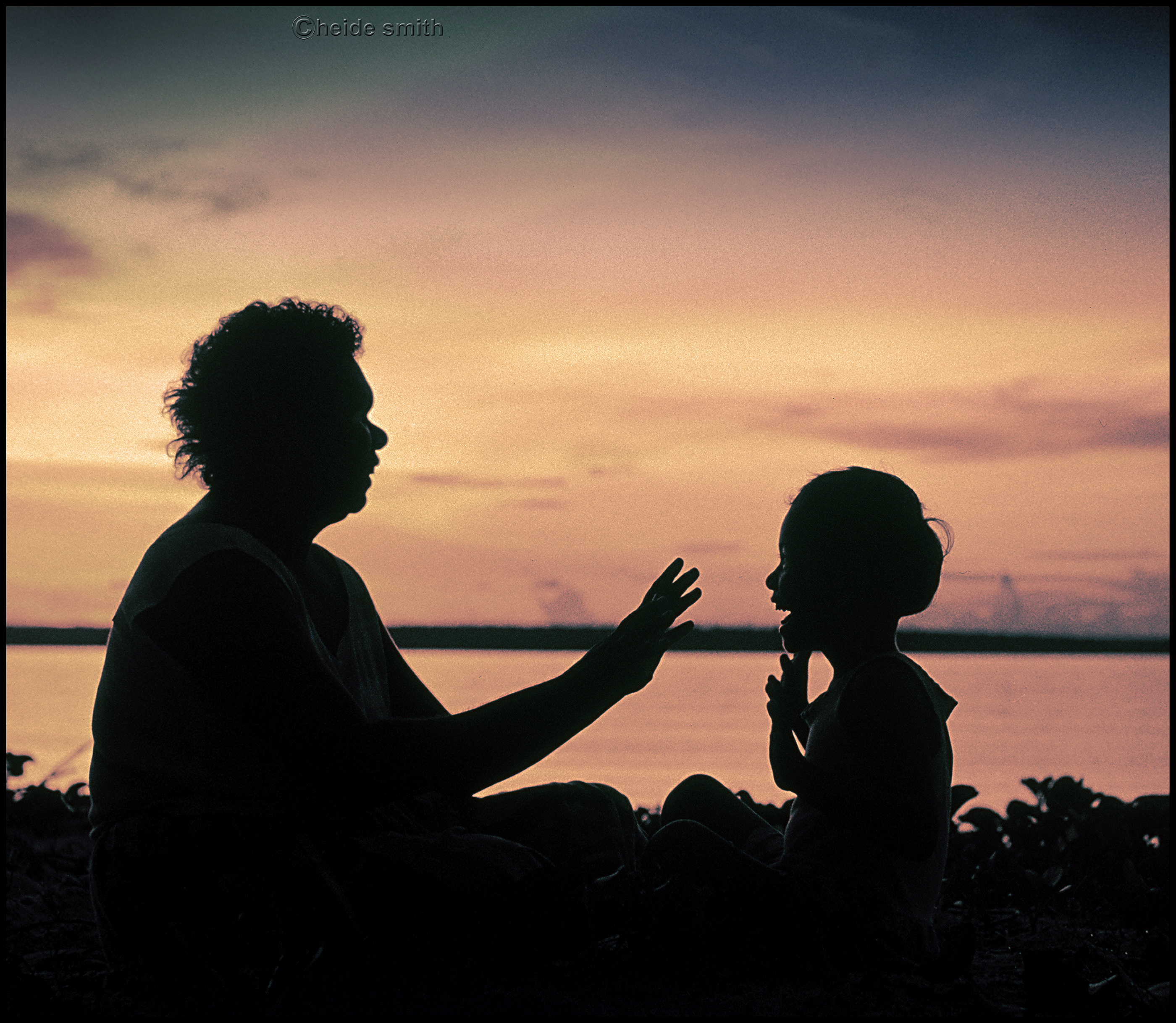Ardent Indigenous Australian 4 Women
Sunset Story

One image from the Sunset Story Series, was used as the Cover Photograph for the “Bringing them home” report for the “National Inquiry into the Separation of Aboriginal and Torres Straight Islander Children from Their Families”, in 1997.
Part 4 of a series of portraits of Ardent Indigenous Australian Women by photographer Heide Smith. The sun had lost its heat and painted everything golden on this beach on the northern part of Melville Island not far from Pulurumpi (Garden Point). Sunset is a time of magic, a time to tell stories, and the Tiwi women love telling stories from “long ago”. I can't remember her name, but I do remember her soft voice when she was telling the tale of Purukaparli and Pima his wife, to this young girl. The story appears in my second Tiwi book, “Portrait of a People - the Tiwi of northern Australia” which you can still buy, in my bookshop. I still find it fascinating.
“Purukaparli, the son of the creator woman Murtankala, lived with his wife Pima and son Jinana. Every day, Pima took Jinani with her to collect food in the bush. She would meet her husband’s brother Tapara, who had persuaded her to leave Jinani asleep in the shade of a tree, so that the two of them could sneak away to make love. On one very hot summer day, Pima stayed away too long. When she returned, the child was no longer in the shade, and had died. On hearing of his son’s death, Purukaparli was outraged. He struck Pima on the head with his throwing stick, and said that death would come to the whole world. Tapara pleaded with him for the body of Jinani, who he said he could restore to life in three days, but Purukaparli refused and fought Tapara; both were seriously wounded. Purukaparli then carried Jinani’s body into the sea, calling out “you must follow me, as I die, so must all of you. Tapara, seeing what had happened, changed himself into the moon to be externally reincarnated every month. Tapara’s scars from the fight can be seen on the full moon. Pima became the Curlew (Waiai), the wailing bird who wanders the night calling in remorse for her dead son.
Before dying, Purukaparli together with Tokampini, the bird man, made the first Pukumani Pole to stand next to the grave of his son, and created the first Pukumani mourning ceremony for Jinani”
The tradition of the Pukumani Pole and Mourning Ceremony, are still observed by the Tiwi today.

In the weeks to come, I’ll introduce you to more portraits and stories of these strong indigenous Australian women - sadly many of them are no longer with us.
Ngya Mamanta Tiwi – Heide Smith
Footnote. Regarding Part 3 of the series Ardent Indigenous Australian Women, Facebook refused to accept the blog, on the grounds that it contained nudity. As you can see on my website, the images were of senior Tiwi women dressed in the traditional way, that is, topless. In her review of my second Tiwi Book in Time Magazine in 2009, Elizabeth Keenen wrote “it’s the portraits that stay with you. Even when her subjects are naked, they are clothed in dignity ”
Viewers should be aware this collection contains references to, and images of deceased people